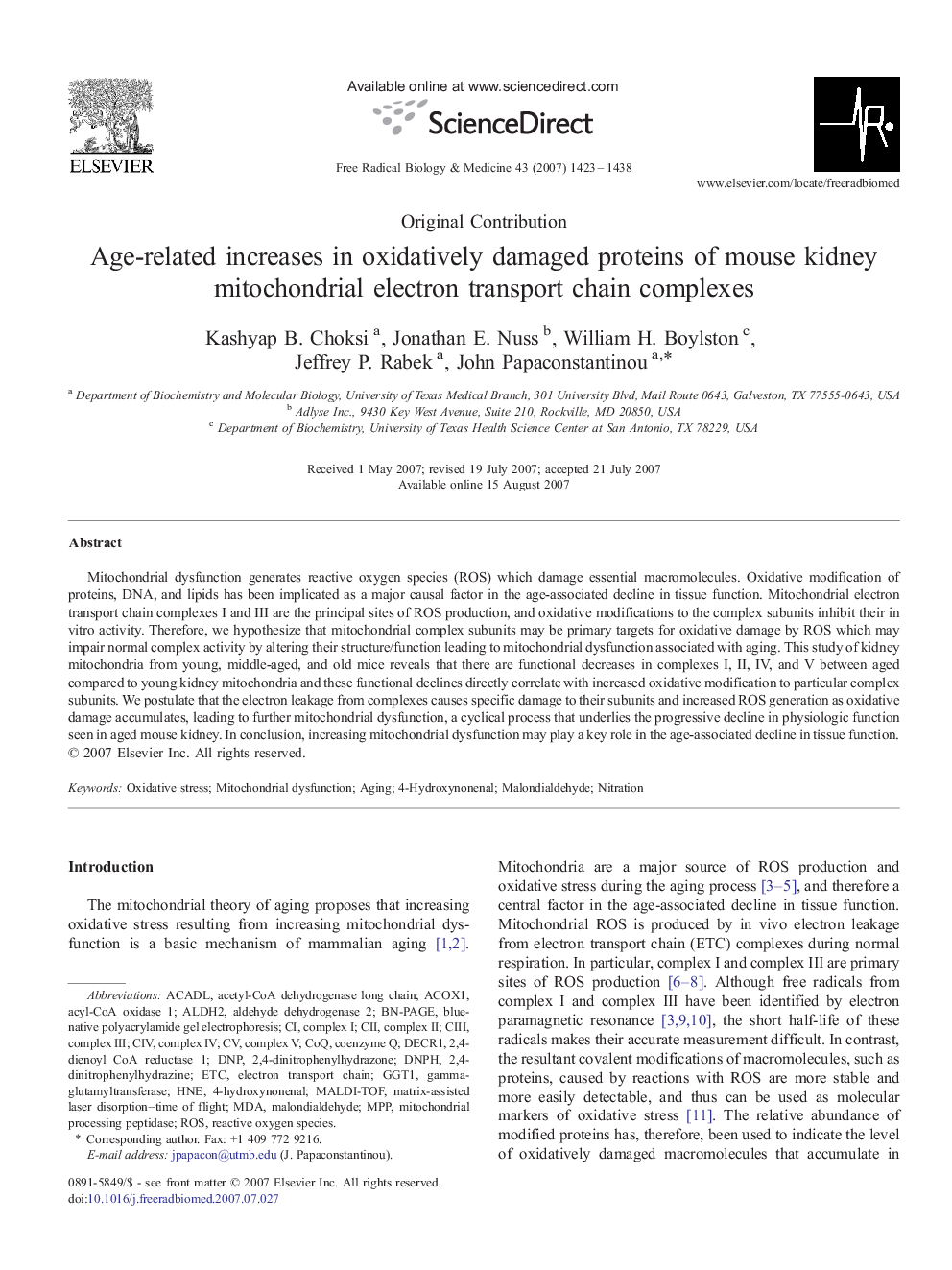| Article ID | Journal | Published Year | Pages | File Type |
|---|---|---|---|---|
| 1911369 | Free Radical Biology and Medicine | 2007 | 16 Pages |
Mitochondrial dysfunction generates reactive oxygen species (ROS) which damage essential macromolecules. Oxidative modification of proteins, DNA, and lipids has been implicated as a major causal factor in the age-associated decline in tissue function. Mitochondrial electron transport chain complexes I and III are the principal sites of ROS production, and oxidative modifications to the complex subunits inhibit their in vitro activity. Therefore, we hypothesize that mitochondrial complex subunits may be primary targets for oxidative damage by ROS which may impair normal complex activity by altering their structure/function leading to mitochondrial dysfunction associated with aging. This study of kidney mitochondria from young, middle-aged, and old mice reveals that there are functional decreases in complexes I, II, IV, and V between aged compared to young kidney mitochondria and these functional declines directly correlate with increased oxidative modification to particular complex subunits. We postulate that the electron leakage from complexes causes specific damage to their subunits and increased ROS generation as oxidative damage accumulates, leading to further mitochondrial dysfunction, a cyclical process that underlies the progressive decline in physiologic function seen in aged mouse kidney. In conclusion, increasing mitochondrial dysfunction may play a key role in the age-associated decline in tissue function.
